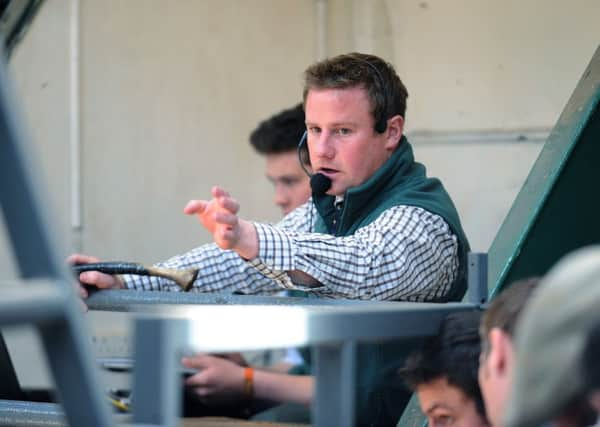Personal approach is paying off for auctioneer at traditional market


But this doesn’t mean Northallerton is a market that is simply ticking away the time.
Giles Drew is the mart manager and auctioneer. He’s one of the youngest in the country to hold both positions and is not one to let any proverbial grass grow under his feet. I spoke with him on Tuesday, prime market day.
Advertisement
Hide AdAdvertisement
Hide Ad“In latest figures we were amongst the top 10 markets in the country for prime cattle numbers and our sheep numbers are vastly increased this year. In April we sold around 12,000 prime sheep. The reason why we’re doing so well is down to what I believe is the good service we offer and probably even more importantly the number of buyers that we attract. We get a fantastic range of butchers, wholesalers and the big processors for cattle and sheep. There are around 14 main buyers for the sheep and around a dozen for the cattle, including Thompsons butchers in Northallerton.”
The increase in throughput isn’t down to an increase in either the national herd or flock size. Over the past decade, since foot and mouth ravaged the countryside, numbers are still believed to be substantially down on pre-2001. Giles sees Northallerton’s expansion having come because of a move back to the livestock market system, because he and his team get out to see potential farmer vendors and because word travels that Northallerton is a good market where prices are strong.
“Earlier in this decade less than 50 per cent of the prime lambs in the country were sold through livestock markets. That’s now increased to over 60 per cent, which means we’re taking more of the overall market share and some producers have shifted from selling stock deadweight and have returned to their local livestock market.
“When I first came here we were selling 800-1,200 lambs a week. We’re now at 1,500-plus through the year and at busy times, anywhere between 2,000-3,000 a week. Word of mouth is a great advertisement and if farmers have been doing well and getting good prices the news travels fast around their colleagues back in the countryside. That’s how you start getting a pocket of farmers from a village or a local area that maybe haven’t come before or have been missing for a few years.”
Advertisement
Hide AdAdvertisement
Hide AdNorthallerton hosts two weekly livestock sales. Tuesday is primestock day. Wednesday is stores day when farmer sells to farmer having brought their stock on to a weight or age so that the buyer can improve the weight and prepare the animals for a primestock sale in the future. Giles points to another interesting trend at the mart and how that is helping.
“Whilst we get livestock dealers buying on behalf of others, we get our fair share of the actual farmers coming to buy their stock. We will have over 20 farmers around the ring every week and that means that there’s always healthy competition.”
This doesn’t necessarily mean that all is rosy. The increased number of cattle coming in from Ireland and Poland is a factor that Giles says is why prime cattle prices are down on prices in January.
“The best cattle are still selling at a premium but there are a lot of Irish cattle coming in and some Polish imports, plus beef isn’t selling just as well at the moment. “It’s a little slower as it’s getting too warm for the Sunday roast and not hot enough yet for everyone to bring out their barbecues.”
Advertisement
Hide AdAdvertisement
Hide AdThe other side of the cattle and sheep coin is that sheep prices are still riding high at around the £100 mark, and it shouldn’t be forgotten that although cattle prices may not be what they were at the start of the year they are still higher than they were three years ago.